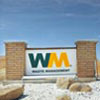At the Kettleman Hills Facility, safety for our employees, our community and the environment is our first priority. We conduct daily, weekly and monthly inspections to ensure that we meet or exceed all local, state and federal laws related to proper storage and disposal of hazardous and non-hazardous waste. The facility also maintains a laboratory staffed with full-time chemists and lab technicians and has an emergency response team, fire engine and other support equipment on-site. Numerous health and safety programs, along with extensive employee training, ensure that employees are well-prepared to support the company’s commitment to environmental protection.
Environmental Management Fact Sheet
The Kettleman Hills Facility works very closely with local, state and federal agencies to comply with regulations and procedures that are specified in our operating permits. The facility is subject to frequent inspections by regulatory agencies in addition to audits by the customers we serve.
Here is just a sampling of the agencies that issue us permits and regulate and monitor our operations:
- Kings County Planning Agency
- California Regional Water Quality Control Board — Central Valley Region
- State Water Resources Control Board
- California Department of Toxic Substances Control
- San Joaquin Valley Unified Air Pollution Control District
- Department of Resources Recycling and Recovery (Cal Recycle)
- United States Environmental Protection Agency — Region IX
- California Department of Fish and Game
- United States Fish and Wildlife Service
 Groundwater Monitoring
Groundwater Monitoring
Groundwater Fact Sheet
The facility has an extensive groundwater monitoring program, with approximately 50 groundwater monitoring wells. The facility submits the sampling results to regulatory agencies on a quarterly basis. The groundwater monitoring system samples 13 marginal water-bearing zones that are connected to the surface within the facility boundaries. All of these water-bearing zones pass beneath and dip away from the Kettleman Hills Facility in a southwesterly direction (away from Kettleman City).
 Air monitoring
Air monitoring
Air Monitoring Fact Sheet
The facility has developed an ambient air monitoring program to ensure that the air in and around the Landfill meets stringent environmental standards. Air quality samples are collected every 12 days from four strategically located monitoring stations.
 Gas Monitoring
Gas Monitoring
Methane gas, produced by landfilled trash, is managed through a gas monitoring program that includes 16 multi-level probes located along the perimeter of the landfill.
 Stormwater Collection
Stormwater Collection
Although there is only 6 inches of average rainfall a year in Kings County, an approved stormwater management plan collects any rainwater runoff to prevent off-site contamination. We conserve this water by channeling it to retention basins and then reusing it for dust control.
 Litter and Dust Prevention
Litter and Dust Prevention
Most litter is caught by the fencing that surrounds the landfills. In addition, crews regularly patrol the perimeter of the facility to catch any additional litter (including litter from outside sources). Landfills are covered with soil or tarps at night. Dust on unpaved interior roads is controlled with the application of water and a dust suppression agent.
